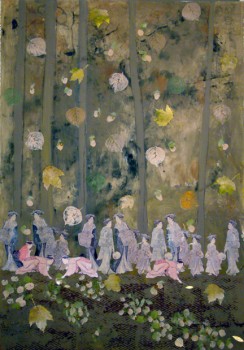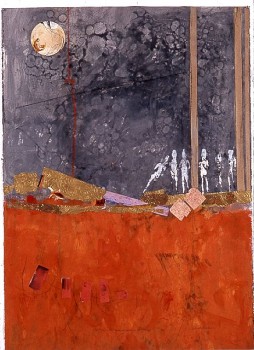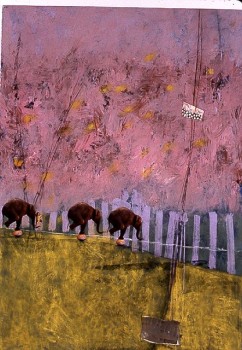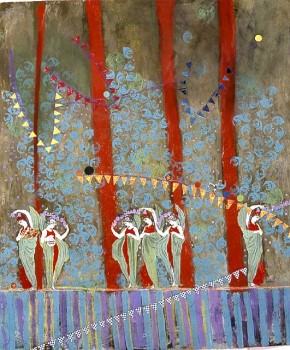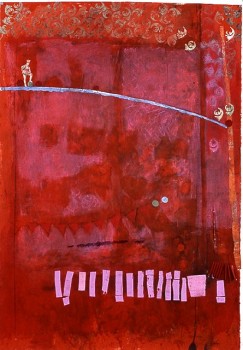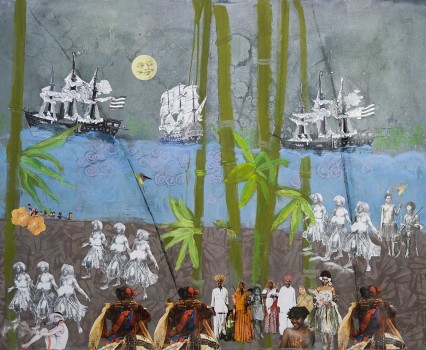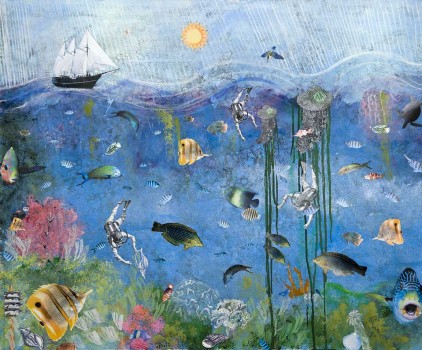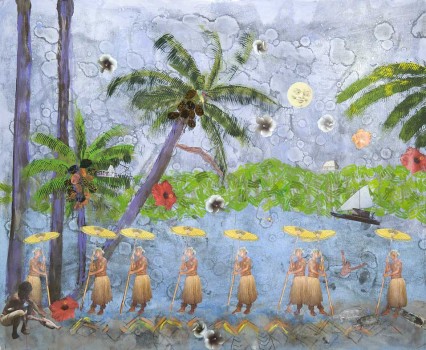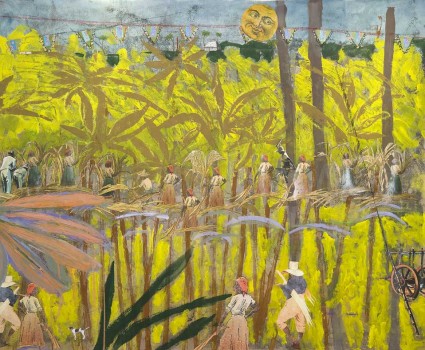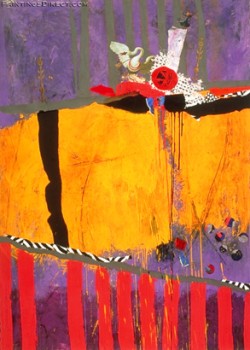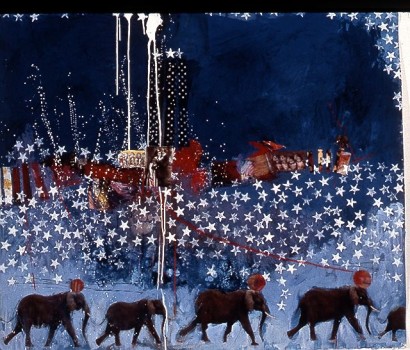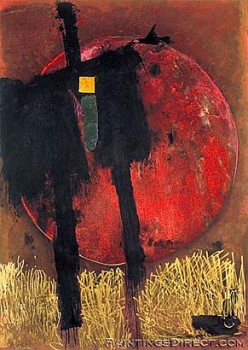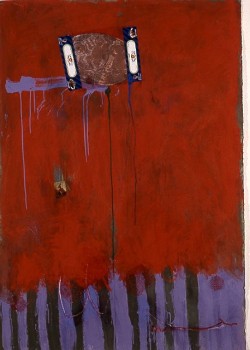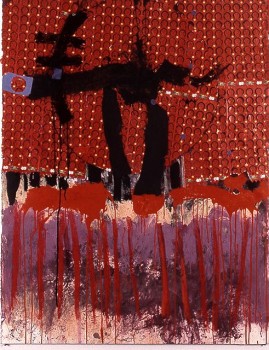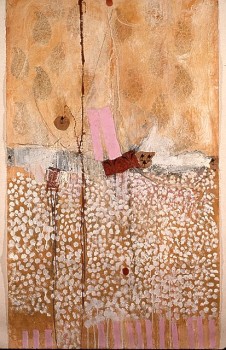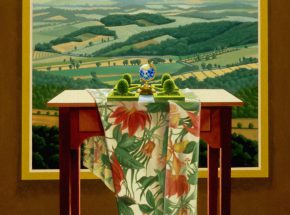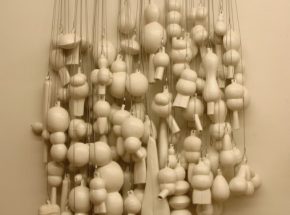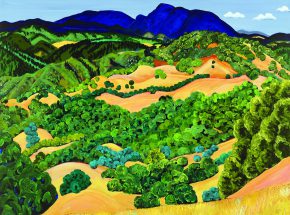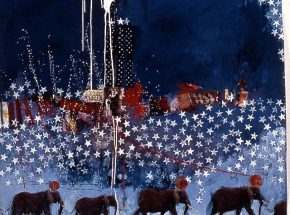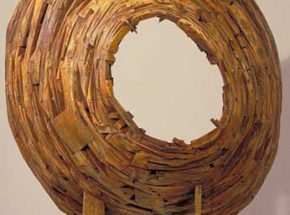

Cecily Barth Firestein, the printmaker, has been making art since she was eight years old and went for art lessons in Woodstock, New York. Over the years, she studied with Hans Hoffman, Yasuo Kuniyoshi, Theodoros Stamos, Hale Woodruff and the printmaker Roberto De Lamonica.
Her initial medium was oil on canvas, but she shifted to collage and painted wooden constructions before gravitating to printmaking in the 1970’s. She has remained a printmaker in the intervening decades. Firestein has become recognized as one of the leading exponents of the mixed-media monotype: a single, unique impression pulled from a painting on a large, thick plate of glass, and worked up with overpainting, drawing, and a complex variety of collage elements. It is interesting to note that she achieves the transfer by placing dampened rag paper on top of the painted glass surface, then applying pressure with a steam iron rather than with a heavy roller. She uses oil based inks mixed with oil of clove.
Her large painterly abstract prints have been widely exhibited here and abroad. She recently presented her 34th one-person exhibition in New York City. Ms. Firestein’s images are known for their lusty originality in the handling of color as well as for their strong humorous and sensuous impact. A unique confluence of elegance and gestural immediacy has always distinguished Firestein’s work. It continues to be very much in evidence. Now, however, something has been added to her mode of lyrical expressionism: bold, somewhat bawdy, representations of the human figure, born directly out of the artist’s interest in oriental art and Sumi painting.
The emergence of the figure is quite obvious if one views the mixed media monotype, “Ancestor Memory with Crow” alongside the slightly later piece, “That Orbed Maiden with White Fire Laden, Whom Mortals Call the Moon.” By looking from the first work to the second, we see how Firestein transformed the bold black abstract calligraphy into the luminous white figure set against the lunar circle that figures in most of her compositions. A delicately delineated bird, generally a crow, perched on each of her powerfully painted figures is also derived from the artist’s interest in Japanese prints.
Her monotypes are included in many corporate and museum collections, such as those of the Corcoran, Delaware Art Museum, Brooklyn Museum, Freud Museums in Vienna and in London, and Zimmerli Art Museum.
Cecily Firestein has also had a sustained interest in the ancient and modern printmaking form of rubbings. Her second volume on rubbings, Making Paper and Fabric Rubbings (Lark Books, 1999) has just been published.
